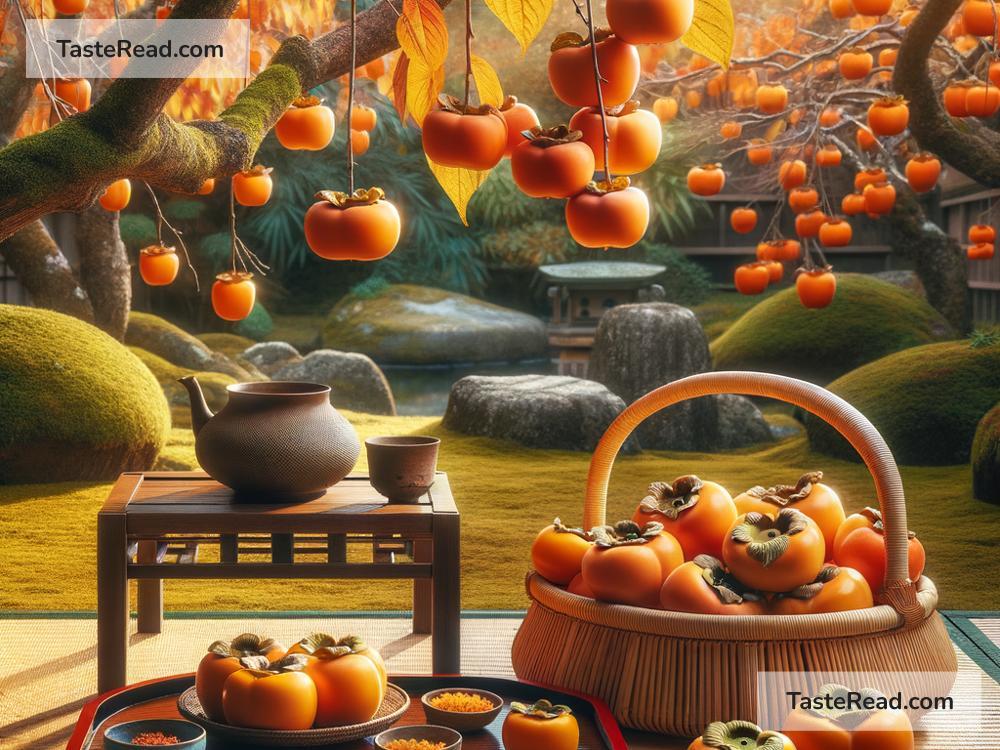The Curious History of Persimmons in Japanese Culture
Persimmons are small orange fruits with a sweet, honey-like taste. They are loved by people all over the world, but in Japan, they hold a special place in culture and history. The fruit has been grown in Japan for centuries, and it is deeply tied to traditions, arts, and everyday life. In this blog, we’ll explore the interesting story of persimmons and how they became so important in Japanese culture.
A Fruit with Ancient Roots
The persimmon, known as “kaki” in Japanese, has been grown in Japan for more than a thousand years. It is believed that the fruit originally came to Japan from China, along with other crops such as rice and tea. Over time, the Japanese people began cultivating their own varieties of persimmons. One popular type known today is the “fuyu” persimmon, which is sweet and easy to eat.
By the 10th century, persimmons were already mentioned in Japanese literature and poems. Writers admired the fruit not only for its taste but also for its bright, autumnal color. The orange hue of persimmons became a symbol of the changing seasons, reminding people that autumn was coming and winter was not far behind.
Persimmons in Japanese Art and Literature
Persimmons have inspired many Japanese artists, poets, and writers. In traditional haiku poetry, the fruit is often mentioned when describing autumn. For example, a haiku by the famous poet Kobayashi Issa reads:
“Persimmons hang there,
Silent, beneath the pale moon
On an autumn night.”
These simple yet beautiful words capture the quiet, calm beauty of persimmons during the fall season.
In art, persimmons often appear in ink paintings and scrolls, especially in works created during Japan’s Edo period (1603–1868). Artists enjoyed painting persimmons because of their bold color and round shape. The fruit symbolized not only nature’s beauty but also simplicity and balance, which are important ideas in Japanese philosophy.
A Part of Everyday Life
While persimmons are admired in poetry and art, they are also an important part of daily life in Japan. The fruit ripens in autumn, and many homes have persimmon trees in their gardens. Families often harvest the fruit together, enjoying time outdoors and appreciating nature.
There are two main types of persimmons: sweet and astringent. Sweet persimmons, like the “fuyu” variety, can be eaten raw. Astringent persimmons, on the other hand, need to be dried to become edible. Drying persimmons is a traditional activity in Japan. The process involves hanging the fruits by their stems and letting the sun dry them out over several weeks. The result is called “hoshigaki,” or dried persimmons. Hoshigaki are sweet and chewy, with a natural sugar coating that looks almost like frost. They are often eaten as a snack or offered at special occasions such as tea ceremonies.
Folklore and Symbolism
Persimmons are not only a fruit to eat—they also have symbolic meanings and appear in Japanese folklore. In some stories, persimmons are seen as symbols of wisdom, health, and longevity. The fruit is rich in vitamins and nutrients, and traditional Japanese medicine believes it can help with digestion and boost energy.
One famous folktale involving persimmons is “The Monkey and the Crab” (Saru Kani Gassen). In this story, a crab and a greedy monkey meet and exchange food. The monkey gives the crab a persimmon seed, which later grows into a tree. As the tree produces fruit, the monkey selfishly tries to steal all the persimmons, leading to mischief and a lesson about fairness and cooperation.
A Global Connection
Persimmons spread to other parts of the world because of Japan’s cultural influence. During the Edo period, when Japan traded with nearby countries, persimmons were introduced to Korea and Southeast Asia. Later, Japanese immigrants brought persimmons with them to places like the United States. Today, “fuyu” persimmons are grown in many countries, often with farming techniques inspired by Japan.
Despite becoming a global fruit, persimmons are still deeply rooted in Japanese culture. Even now, they are featured in seasonal foods, traditional decorations, and even souvenirs. On New Year’s Day, dried persimmons are sometimes offered to the gods as a way to pray for good health and happiness in the coming year.
Modern Love for Persimmons
Persimmons remain popular in Japan today, both as food and as symbols of tradition. Every autumn, grocery stores sell fresh persimmons, and bakeries offer persimmon-flavored treats such as cakes and jelly. In rural areas, you can still see hoshigaki drying in open air, just as people have done for hundreds of years.
For younger generations, persimmons connect them to their cultural past. Many Japanese families pass down recipes for persimmon-based dishes, reminding everyone of the fruit’s role in their heritage.
Conclusion
The history of persimmons in Japanese culture is a story of connection—with nature, tradition, and community. Over centuries, this humble fruit has grown into a cultural treasure, inspiring art, poetry, and shared experiences. Whether eaten fresh, dried, or even painted onto canvas, persimmons continue to remind people of the simple joys of life and the beauty of the changing seasons. So next time you bite into a sweet persimmon, think about the journey this fruit has made and the stories it carries.


